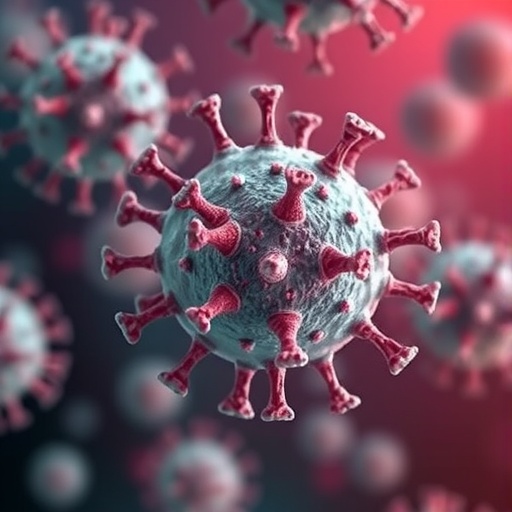A newly identified protein called KHNYN teams up with ZAP, a known virus-killing protein, to destroy viruses related to HIV
A new protein called KHNYN has been identified as a missing piece in a natural antiviral system that kills viruses by targeting a specific pattern in viral genomes, according to new findings published today in eLife.
Studying the body’s natural defenses to viruses and how viruses evolve to evade them is crucial to developing new vaccines, drugs and anticancer treatments.
The genetic information that makes up the genomes for many viruses is comprised of building blocks called RNA nucleotides. Recently, it was discovered that a protein called ZAP binds to a specific sequence of RNA nucleotides: a cytosine followed by a guanosine, or CpG for short.
The human immunodeficiency virus (HIV) normally escapes being inhibited by ZAP because it has evolved to have few CpGs in its genome. However, when CpGs are added back to the virus, ZAP promotes its destruction. This helps us understand why HIV with more CpGs multiplies less successfully, and likely explains why many strains of HIV have evolved to have few CpGs. But a mystery remained because ZAP is unable to break down the viral RNA by itself.
“As ZAP can’t degrade RNA on its own, we believed that it must recruit other proteins to the viral RNA to destroy it,” says lead author Mattia Ficarelli, a PhD student in Chad Swanson’s Lab, Department of Infectious Diseases, King’s College London. “So, in the current study, we set out to identify new human proteins that are essential for ZAP to target viral RNAs for destruction.”
After discovering that KHNYN interacts with ZAP, the team tested what happens when they increased the amount of KHNYN produced in cells infected with a typical HIV that has few CpGs, or an HIV genetically engineered to have many CpGs. Increasing KHNYN production in the cells reduced the typical HIV’s ability to multiply about five-fold and decreased the ability of the CpG-enriched HIV to multiply by about 400-fold.
To figure out if KHNYN and ZAP work together, the team repeated the same experiments in cells without ZAP and found that KHNYN did not inhibit the ability of CpG-enriched HIV to multiply. They then looked at what happened in cells genetically engineered to lack KHNYN, and found that both CpG-enriched HIV and a mouse leukemia virus that has many CpGs were no longer inhibited by ZAP.
“We have identified that KHNYN is required for ZAP to prevent HIV from multiplying when it is enriched for CpGs,” explains co-corresponding author Professor Stuart Neil, Department of Infectious Diseases, King’s College London. He adds that KHNYN is likely an enzyme that cuts up the viral RNA that ZAP binds to.
“An interesting potential application of this work is to make new vaccines or treat cancer,” adds senior author and lecturer Chad Swanson, from the same department. “Since some cancer cells have low levels of ZAP, it may be possible to develop CpG-enriched, cancer-killing viruses that would not harm healthy cells. But much more research is necessary to learn more about how ZAP and KHNYN recognise and destroy viral RNA before we can move on to explore such applications.”
###
Reference
The paper ‘KHNYN is essential for the zinc-finger antiviral protein to restrict HIV-1 containing clustered CpG dinucleotides’ can be freely accessed online at eLife.46767″>https:/
Media contact
Emily Packer, Senior Press Officer
eLife
[email protected]
01223 855373
About eLife
eLife is a non-profit organisation inspired by research funders and led by scientists. Our mission is to help scientists accelerate discovery by operating a platform for research communication that encourages and recognises the most responsible behaviours in science. We publish important research in all areas of the life and biomedical sciences, including Immunology and Inflammation, and Microbiology and Infectious Disease, which is selected and evaluated by working scientists and made freely available online without delay. eLife also invests in innovation through open-source tool development to accelerate research communication and discovery. Our work is guided by the communities we serve. eLife is supported by the Howard Hughes Medical Institute, the Max Planck Society, the Wellcome Trust and the Knut and Alice Wallenberg Foundation. Learn more at https:/
To read the latest Immunology and Inflammation research published in eLife, visit https:/
And for the latest in Microbiology and Infectious Disease, see https:/
Media Contact
Emily Packer
[email protected]
Related Journal Article
https:/
http://dx.




